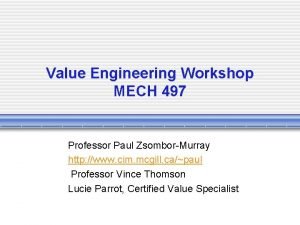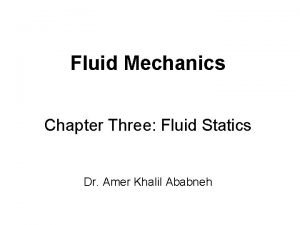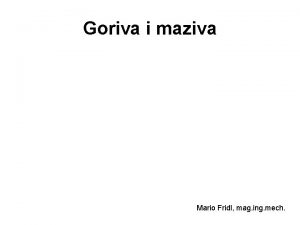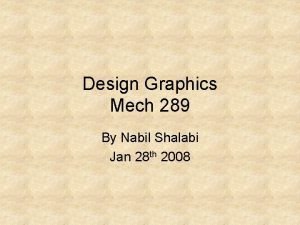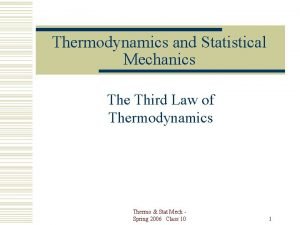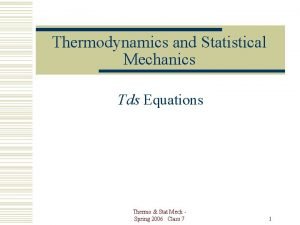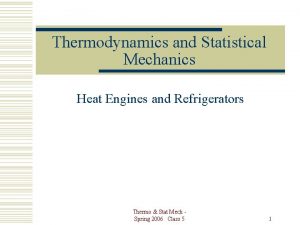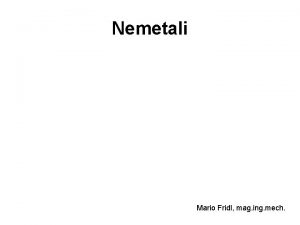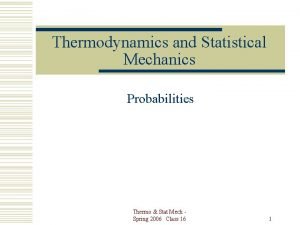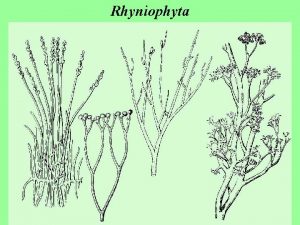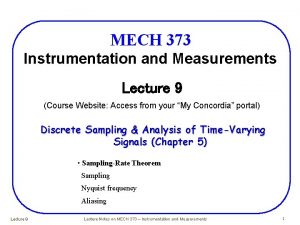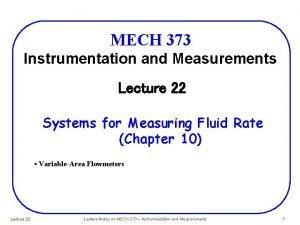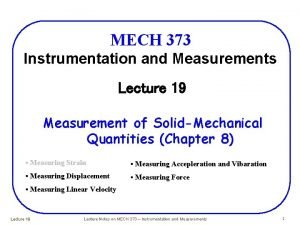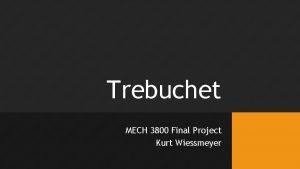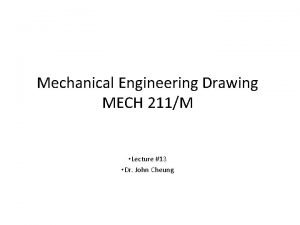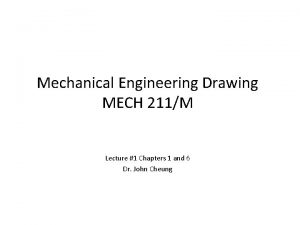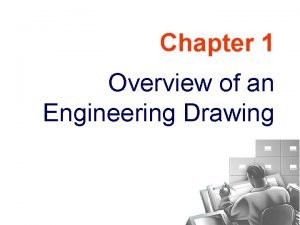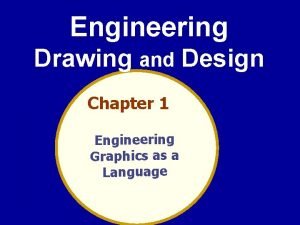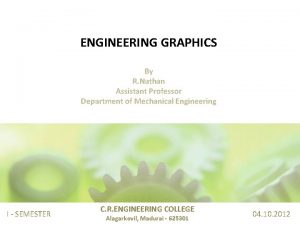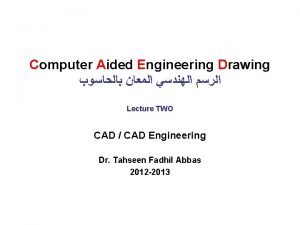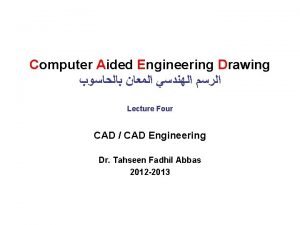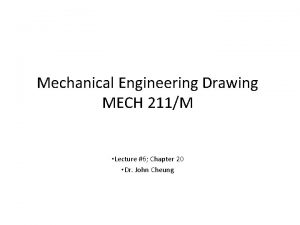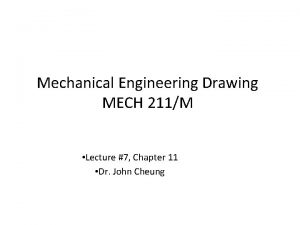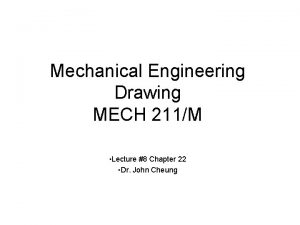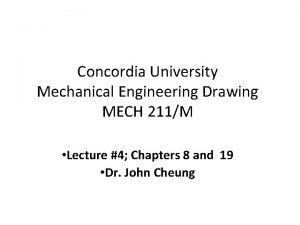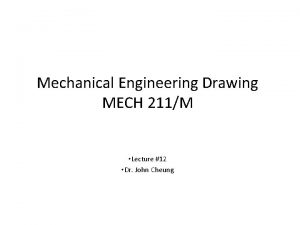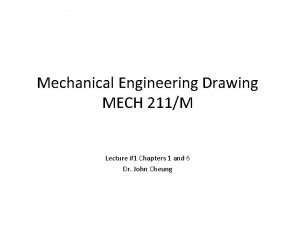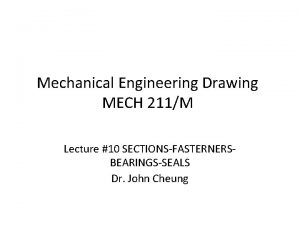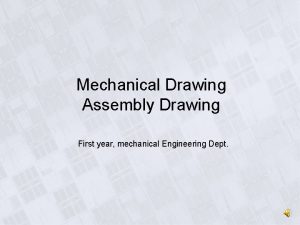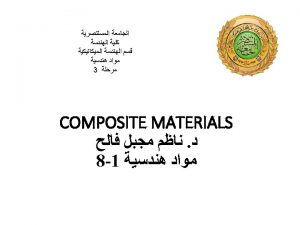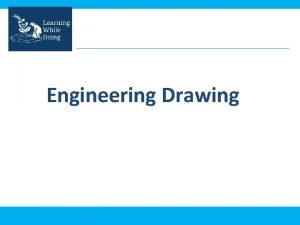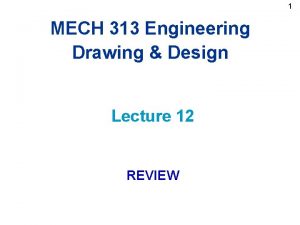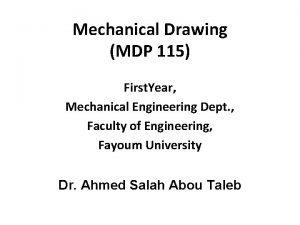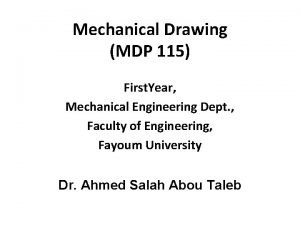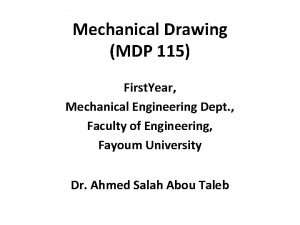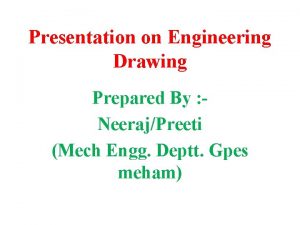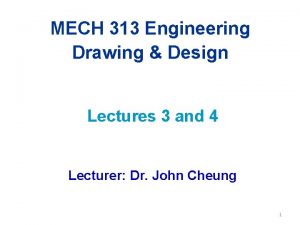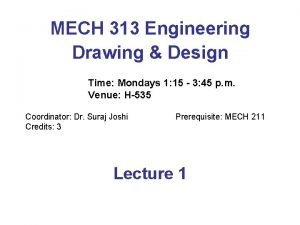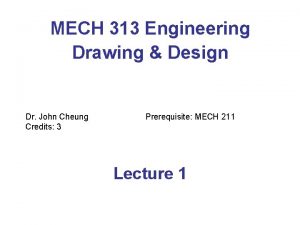Mechanical Engineering Drawing MECH 211M Lecture 5 Chapter





























- Slides: 29

Mechanical Engineering Drawing MECH 211/M • Lecture #5; Chapter 19 • Dr. John Cheung

Lecture 4 summary Dihedral angle – Line – true length – point view. Plane – true length- EV and TS. Intersection line – validation. Skew lines – validation – visibility. Rotation method – true length – development work for cone. • Compass – Direction (no need to be true length). Slope (Horizontal angle) needs true length. • Distance between lines and point. • • • 2

Point View of Line Viewing parallel to TL - Point 3

Point View of Line Find True length. Project parallel to TL – Point. Find the minimum distance between point and true length. 4

Shortest distance between two skew lines 5

Shortest distance between two skew lines 1. Draw folding line, obtain true length line 1 -2. 2. Draw FL perpendicular to true length, obtain point view of Line 1 -2. 3. Draw perpendicular line from Point 1, 2 to line 3 -4. This line = shortest distance between the two skew lines. 6

Line passing through two skew lines Find a line through point A and intersecting skew lines 1 -2 and 3 -4. 7

Line through a point and intersecting two skew lines 1. Draw a line through Point ‘A’ and intersecting two skew lines. 2. Using edge view method. 3. T. L. of Line 1 -2 then point view of line 1 -2. 4. Draw line through Point view 1 -2 and A to Line 3 -4, form Line C-A-B. 5. Project Points B and C back to Auxiliary 1, Front and Top views. 8

Plane Representation • • A, Intersecting lines. B - Parallel lines. C - Three points not in a straight lines. D – A line and a point not on that line. 9

Plane Representation 10

Straight line in plane Find the missing line 4 -5 in front view. 2 7 3 11

Straight line in plane Find the missing line 4 -5 in front view using cutting plane method. 1. Given line 4 -5 in top view. 2. Lines 4 -5 and 1 -2 not parallel, hence must intersect at Point 6. 3. Extend line 4 -5 until it crosses line 2 -3, then yield Point 7. 4. Cutting plane method – Project Point 6 to Line 1 -2 and Point 7 to Line 2 -3 in front view. 5. Joining points 4, 5, 6 and 7 to form the corresponding Line 4 -5 in front view. 12

Location of a Point on a Plane Locate point 4 in the plane 1 -2 -3 IN Top view. 13

Location of a Point on a Plane Locate Point 4 in Top View in Plane 1 -2 -3 1. Cutting plane method. 2. Extend Line 3 -4 until it intersects Line 1 -2 in Front view, then yield Point 5. 3. Project Point 5 to Line 1 -2 in Top view. 4. Join Line 3 -5 in Top view. 5. Project Point 4 in Line 3 -5 in Front View to Line 3 -5 in Top view. The intersection is Point 4 in Top View. 14

Location of a Point on a Plane Locate Point 4 in Plane 1 -2 -3 in Top View 1. Based on parallelism principle. 2. Draw a Line starting at Point 4 parallel to Line 2 -3 in Front view. Intersection = P 5. 3. Project P 5 in Front View to Line 1 -2 in Top View yields the corresponding P 5 in TV. 4. Draw a line starting from P 5 parallel to Line 2 -3 in TV. 5. Project P 4 in Front View to Line starting with P 5. Intersection = P 4 in TV. 15

Finding Point in Plane 1. Given: Point P 10 mm above P 2 and 12 mm behind P 3. 2. In Front view, Point P is somewhere along Line 4 -5. 3. In Top View, Point P is somewhere along he line 12 mm behind P 3. 16

Finding Point in Plane - continued 1. Cutting plane method. Use Line 4 -5 in Front view as Cutting plane. 2. Project P 4 to Line 1 -2 and P 5 to Line 2 -3 in TV. 3. Join P 4 and P 5 in Top view. 4. Use Line 6 -7 (12 mm behind P 3) as CP. 5. Project P 6 to Line 1 -2 and P 7 to Line 1 -3 in FV. 6. Join P 6 and P 7. 7. Intersection of Lines 4 -5 and 6 -7 is Point P. 17

Edge View of Planes 1. Given Plane 1 -2 -3. 2. Find the edge view. 18

Edge View of Planes 1. 2. 3. 4. Given Plane 1 -2 -3. Find the edge view. True length. Draw auxiliary view looking parallel to TL. (Folding line perpendicular to TL) 5. Edge view with True length showing as a point, i. e. , Points 2 and 4. 19

Piercing Point – Edge view method 1. Given Plane 1 -2 -3 and Line 4 -5. 2. Find piercing point between Line 4 -5 and Plane 1 -2 -3. 20

Piercing Point – Edge view method 1. Using edge view method. 2. Find TL in Front view. 3. Draw auxiliary view parallel to TL, i. e. Edge view of Plane 1 -2 -3. 4. Extend Line 4 -5 until it crosses Plane EV. The intersection = piercing point. 21

Piercing Point – Edge view method 1. Using edge view method. 2. Project piercing point back to Front View and Top view. 3. Check distance D 1 between the auxiliary and Top views for accuracy. 22

Piercing Point – Cutting Plane method 1. Using CP method. 2. Cutting plane AA containing Line 4 -5. 3. Cutting Line 6 -7 in Plane 1 -2 -3. 4. Line 6 -7 and Line 4 -5 in the sane plane – must intersect. 5. Project P 6 and P 7 to Front View. Draw Line 6 -7. 6. Intersection between Line 4 -5 and 6 -7 in FV = Piercing point. 7. Project piercing point to TV. 23

Piercing Point – Cutting Plane method 1. Using CP method. 2. Determine the visibility of line and plane using the skew lines method learnt in Lecture 4. 3. View A, looking down to FV, see Line 2 -3 first, So, Line 2 -3 on top in TV. 4. View B, looking up to TV, see Line 2 -3 first, so Line 23 is above and Line 4 -5 hidden in FV. B A 24

Intersection of Planes – EV method 1. Given Plane 1 -23 and Plane 4 -56. 2. Find intersection of two plane = straight line containing all points common to the two planes. 3. TL of one plane and follow with its EV. 4. Intersection points = Piercing points. 25

Intersection of Planes – EV method 1. Given Plane 1 -23 and Plane 4 -56. 2. Project the two piercing points to TV and FV. 3. Draw the line connecting the two piercing points. 26

Angle between line and plane 1. Given Plane 1 -23 and Line 5 -6. 2. Using EV and True size method. 27

Angle between line and plane 1. 2. 3. 4. 5. 6. Given Plane 1 -2 -3 and Line 5 -6. Using EV and True size method. True length of Plane 1 -2 -3. Draw Edge View of Plane 1 -2 -3. . Draw True size of Plane 1 -2 -3. Draw auxiliary view, looking perpendicular to Line 5 -6 parallel to folding line. Hence, line 5 -6 = True length. 7. Measure the angle between True length Line 5 -6 and the EV of plane 1 -2 -3. 28

Angle between line and plane 29
 Detailed drawing example
Detailed drawing example 01:640:244 lecture notes - lecture 15: plat, idah, farad
01:640:244 lecture notes - lecture 15: plat, idah, farad Pictorial sketches
Pictorial sketches Mech 497
Mech 497 Mehanika fluida ftn
Mehanika fluida ftn Center of pressure equation
Center of pressure equation Mag ing mech
Mag ing mech Mech 289
Mech 289 Stat mech
Stat mech Tds equation in thermodynamics
Tds equation in thermodynamics Stat mech
Stat mech Mag ing mech
Mag ing mech Mech
Mech Rhizomoidy
Rhizomoidy Mech robotix
Mech robotix Mech
Mech Mech
Mech Mech
Mech Trebuchet mech
Trebuchet mech Mech 211
Mech 211 Dihedral angle engineering drawing
Dihedral angle engineering drawing Dr david mech
Dr david mech Actual mechanical advantage vs ideal mechanical advantage
Actual mechanical advantage vs ideal mechanical advantage Drawing chapter 1
Drawing chapter 1 What is the use of engineering drawing
What is the use of engineering drawing Drawing lecture
Drawing lecture Drawing lecture
Drawing lecture Engineering drawing
Engineering drawing Financial engineering lecture notes
Financial engineering lecture notes Software engineering lecture notes
Software engineering lecture notes



